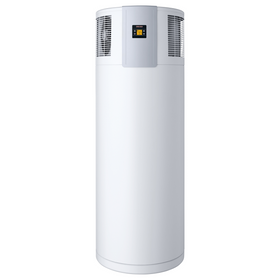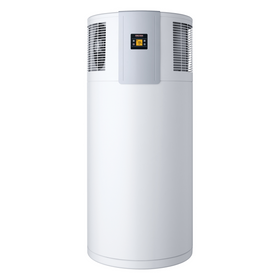
A Net-Positive Home in Humid Georgia
Last Updated: Feb 13, 2025Mark Kuntz has enjoyed a long and fruitful career with Mitsubishi Electric—one that’s led Kuntz and his wife Denise into a new, net-positive sustainable home. He first set foot on that path early in his career while working in Chicago.
He had been collaborating with architect Tom Bassett-Dilley on the first passive house in Chicago. Tom Bassett-Dilley Architecture specializes in Passive House technology, zero-energy buildings, and biophilic design. After installing two mini-splits in the home, which provided supplemental heat during a 20-degree-below cold spell, Kuntz checked on his customers: No complaints. They were happy with the mini-split performance.
Then, during a trip to Japan, he toured an electric, smart house in Ofuna that Mitsubishi Electric had constructed. While the home included many bells and whistles, Kuntz especially liked the bi-directional electric car and charger. “In the case of a grid outage, you could back feed from the car battery and run it through the house to all the critical systems,” he explained in a case study. “Coupled with a solar array, you could do that for days on end. It was a great demonstration of how a fully-integrated, high-performance house can be even more impactful to the owner.”
Now the chief executive officer of Mitsubishi Electric Trane HVAC US (METUS), Kuntz purchased a lakeside property five years ago outside Atlanta, Georgia. His purpose was to build an electric, net-positive home. That’s not all. “It was our lifelong dream to build this house,” he says. “As we started contemplating retirement, we thought: What if we could build a house without a mortgage, with no maintenance, and with no energy requirements. Would that be a load off our minds for the last 30 years of our lives?”
So they did just that. The Kuntzes found the Imery Group, a Certified B Corporation, and began working with Luis Imery, who designs and builds custom sustainable homes. “Luis said our no maintenance requirement was a bit of a stretch,” Kuntz says with a laugh. “But we certainly could build with life-long components and with nothing too specialized that I couldn’t handle as a do-it-yourself handyman.”
Table of Contents
- An Air-Tight Envelope
- Smart Mechanicals
- A Year Later

Having noticed a modern farmhouse in a magazine, the Kuntzes asked Imery to emulate that style. Today, the couple lives in a 1,800-square-foot, two-level modern farmhouse at the tip of a lake. Is it sustainable? Net-zero? Kuntz laughs: “It’s net positive, with a recent HERS score of -13!”
An Air-Tight Envelope
“The whole mindset of farmhouse and sustainability and self-sufficiency has always appealed to us,” Kuntz says. “The notion of building something for generations to come that reflects something in our background was important. Denise and I both have an agricultural heritage.” Once the couple met Imery, everything clicked. “We wanted a high-performance home with a tight envelope, mechanical ventilation with a continuous supply of fresh air, and as much Mitsubishi equipment we could come up with.”

“Luis is an expert at high-performance construction in the South,” he continues. “Humidity is such an enemy here. Mold growth is real. We needed someone from the South with a specialty in this type of construction. Luis had the knowledge and resources to create the right building envelope.”
Imery set a goal of building a DOE Zero Energy Ready Home for the couple. That meant planning for the healthiest and most energy-efficient home before installing renewable energy or energy-efficient systems. To create an air-tight thermal envelope around the house, the contractors installed below-grade slab insulation. They clad the walls in ZIP System® R-Sheathing (from Huber Engineered Woods). They further insulated the shell with spray cellulose, a recycled paper product. Combined, these materials prevent air leaks and help ensure peak mechanical performance. When completed, the walls were rated at R-28, and the roof R-50—both significantly higher than code requirements.
Smart Mechanicals
Kuntz and the Imery Group collaborated with Energy Vanguard on the layout and load calculations for the mechanical system. The team selected three MSZ-FH Wall-Mounted Indoor Units (one for each bedroom) and one Horizontal-Ducted Indoor Unit (PEAD) to provide heating and cooling on the first floor. They also installed Mitsubishi Electric’s mobile app and web service, kumocloud® so that the couple can control their comfort levels from their devices.

The home also includes an energy recovery ventilator, dehumidifier, and photovoltaic solar panels. A prototype hot water and space conditioning heat pump from Mitsubishi Electric is “a split system: half outdoors (so it’s not cannibalizing heat) and half indoors to provide hot water, heating, and cooling to the rest of the downstairs,” Kuntz explains. “When in air-conditioning mode, it’s capturing heat inside the house and putting it in the water; it’s essentially gathering free heat.”
Harkening back to the Ofuna smart home, Kuntz installed an electric car charging station in the garage, with a bi-directional charger planned for the future. The all-electric low-load home, drawing energy from photovoltaic panels on the roof, brings the residence to net positive. The house officially meets DOE Zero Energy Ready Home, ENERGY STAR®, EPA Indoor airPLUS, and EarthCraft™ certifications. The home also exceeds the 2009 and 2012 International Energy Conservation Code® (IECC). Kuntz’s house should realize an annual savings of $2,837 compared to the average new U.S. home with solar panels.
A Year Later
The couple moved in last October and have no regrets. “What we love most is we don’t have any energy costs,” Kuntz says. “We’re putting twice as much energy on the grid as we take off.” As for pleasant surprises, he adds, “We love how quiet the home is. If we want to hear the birds, the trees, the lake, we can open the windows. But when we close the triple-pane windows, it’s calm and quiet.”

Kuntz says he also enjoys the fresh air circulating throughout the home. “There isn’t any sense of stagnant air in any part of the house. I attribute that to the recovery ventilator, which continuously brings in the fresh air.”
The couple also has a wood-burning fireplace—“which is antithetical to a high-performance home,” he says. (Homes can lose substantial heat through the chimney; see Heat Loss is a Cold Reality of a Wood Burning Fireplace.) “But what’s a farmhouse without a fireplace? We had a sealed combustion system with air brought in through a firebox. We love the aesthetic of a fireplace in a tightly insulated home.”
As for what the couple might have done differently? “We made our master bedroom a bit too small,” he says. “With home and views like this, why spend any time in the bedroom? Still, it could have been a little bigger.” The home is perfect, though, he adds, for his growing family—which now includes four grandchildren.
“Our grandkids will grow up knowing how to fish, what zero energy means, and what photovoltaic panels are for,” Kuntz says. “With our home, we’re educating the next generation.”
Camille LeFevre
Camille LeFevre is an architecture and design writer based in the Twin Cities.










